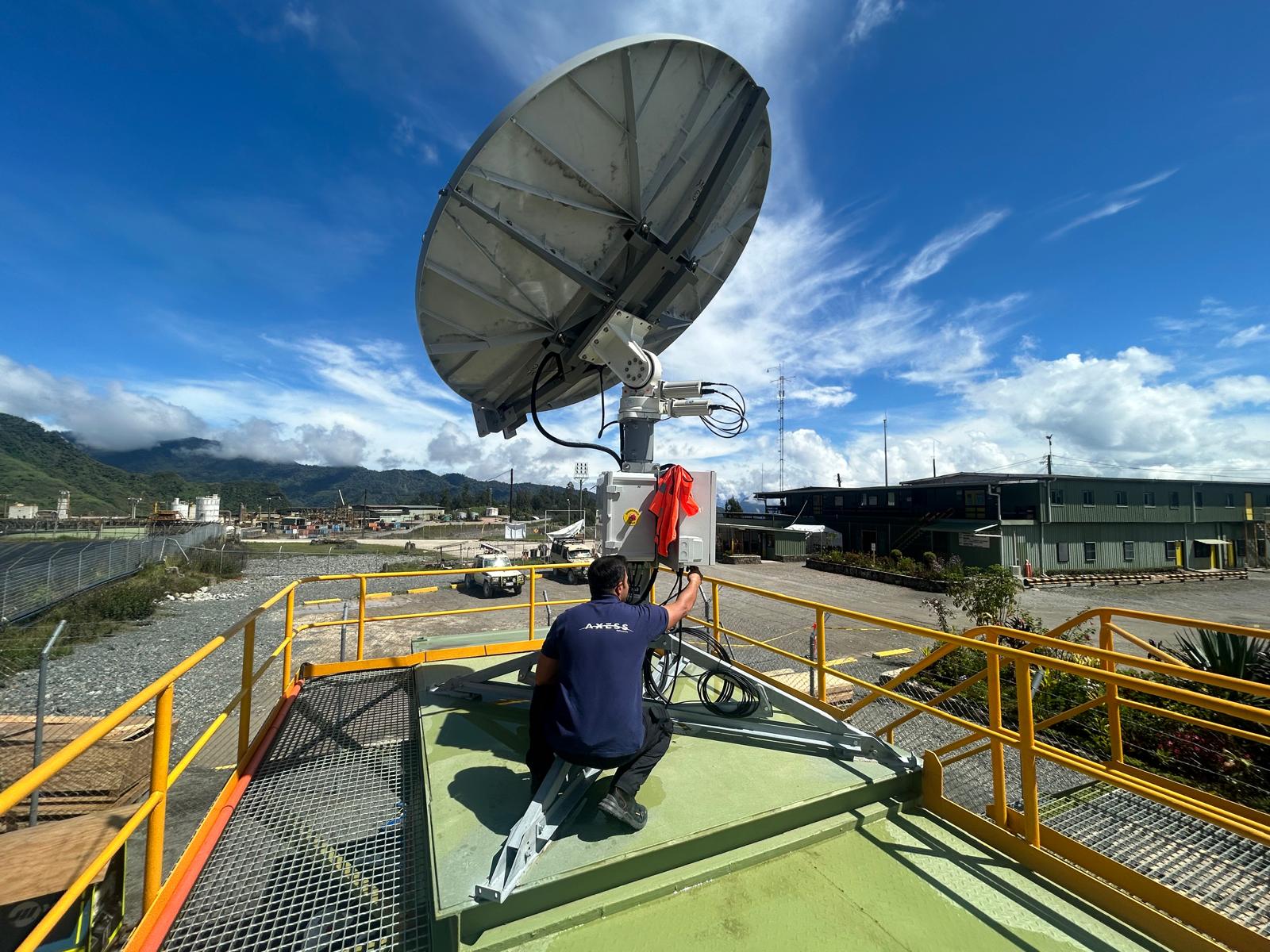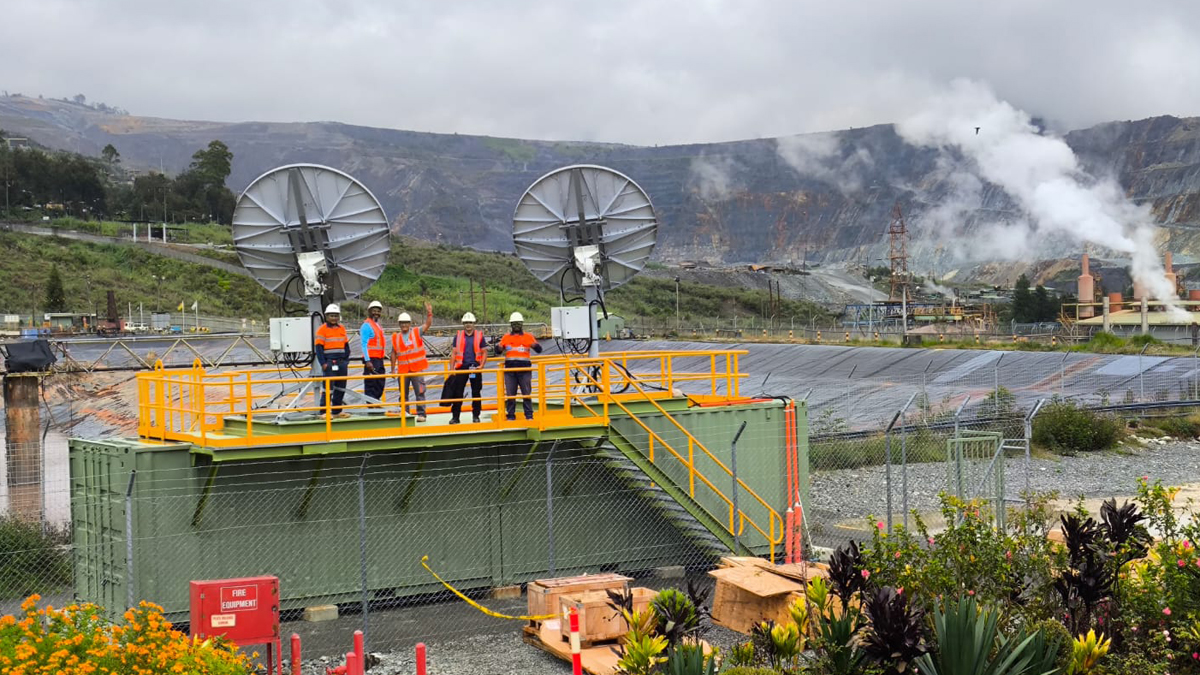 Mining operations across the world are leveraging multi-orbit satellite technology available from operators such as SES. (Source: SES)
Mining operations across the world are leveraging multi-orbit satellite technology available from operators such as SES. (Source: SES)
The mining industry has a unique problem: as it grows, mine operations are becoming increasingly remote, making it more difficult to guarantee connectivity. Satellite operators may have a definitive solution.
Across the mining industry, “the integration of [satellite] technologies is driving significant market growth, with projections indicating an expansion from $13 billion today to $33 billion by 2032,” said Simon Gatty Saunt, VP of Sales Europe and Africa at SES. In the coming decade, this market opportunity for satellite solutions will support a digital transformation across the mining industry, ultimately making possible the construction of the world’s first smart mines.
Monitoring Mining Activities
Satellite networks have the capability to support nearly every part of the end-to-end mining process, from surveying and finding new deposits during the notoriously difficult exploration phase, or providing connectivity to autonomous vehicles during mine operation. And after a mine is closed, satellite monitoring ensures that land is rehabilitated correctly.
Many Earth observation companies are making headway in the mining sector by providing advanced imagery and analytics that can be used to monitor mine activities, track changes in infrastructure, assess environmental conditions or monitor resource management. “All of the activity is now down in the LEO orbits, with satellites in the hundreds that provide imaging of the whole Earth every day,” said a representative from RioTinto, the world’s second largest metals and mining corporation, with sites in 35 countries. But mining companies like RioTinto aren’t just looking for EO data from LEO. “We are starting to explore where satellite communications can complement our existing network infrastructure,” he added.
GEO has typically been used for reliable connectivity in remote areas, but continuing to rely solely on geostationary satellites won’t be enough for the next generation of hyper-connected mines. Smart mines will also require the lower latency capabilities of MEO and LEO constellations, which are better suited to high throughput from sensor data.
In this new era of mining, satellite companies that can deliver connectivity via multiple orbits will have an edge. SES, for example, is combining the high-throughput capabilities of O3b mPOWER, their second generation MEO satellite communication system, with the reach and resilience of GEO satellites.
With satellite support from multiple orbits, mining operators can look forward to receiving a consistent stream of data on monitored mining activities, with daily and even hourly updates—and eventually in near real time.
 Access to O3b mPOWER, a satcom system by SES, is installed at a mine. (Source: SES)
Access to O3b mPOWER, a satcom system by SES, is installed at a mine. (Source: SES)
Making Sense of Satellite Data
Currently, one of the largest obstacles that mining operators face is the ability to produce and access relevant data. “In ten years’ time, it’s quite realistic to say that we’ll be in a situation where the problem of pushing data around will largely be solved,” said the representative from RioTinto. Looking down the road, seamlessly integrated satellite networks will mean that the industry will be inundated with data, and the more pressing question will quickly shift from data access to data processing.
“Satellite communications are central to managing the vast amounts of data produced by [mining] assets,” said SES’s Gatty Saunt. Satellite-connected mines that generate data on a daily or even hourly basis will quickly face the problem of making sense of a mountain of information. But it will also provide the opportunity to have much greater situational awareness and to monitor operations on a highly granular level—and whoever can find a way to analyze it fast enough to make it useful will come out ahead.
“These technologies enable real-time data analytics and automation, helping to identify hazards, protect workers and monitor equipment conditions for predictive maintenance,” he said. That’s what will make these mines ‘smart’—they will leverage continual connectivity to inform decision making and resource management. Guaranteed continuous satellite connectivity also means that soon, even the most remote mines will be plugged into the Internet of Things (IoT).
Plugging in to the Industrial Internet of Things
True smart mines will only be possible if the mining industry can seamlessly integrate operational technology (OT) and information technology (IT) systems. Operational technology includes all types of physical infrastructure and equipment; in mining, this includes machinery, haulage trucks, sorting and all other physical processes. Information technology includes information processing, data transmission and data storage. While the two systems are traditionally disparate, integrating them will make it easier to unlock the potential value of a smart mine operation by drastically increasing the amount of data available to leverage.
Once OT/IT systems are integrated, mines will be better able to leverage access to the Industrial Internet of Things (IIoT), an extension of IoT in industrial sectors. IIoT opens up the world of machine-to-machine communication, the aggregation and sorting of big data, and machine learning—all in an effort to produce better efficiency and reliability in physical operations.
Multi-orbit satellite systems will work in tandem with the mining operation to quickly and efficiently transfer data to the cloud or private data centers for analysis and processing. High latency data transfer via satellite systems results in valuable insights that can be used to make better and faster decisions on the ground, directly resulting in safer and more sustainable practices.
While IIoT will open considerable new opportunities for mine operators, it will only become a reality if the industry begins to invest. According to Viasat’s State of IoT in 2024 report, “mining is not only at an IoT standstill, but also remains far behind other sectors.” But environmental, social and governance (ESG) pressures could tip the balance, and more mining companies are building formal IoT strategies to help them address increasing regulation around tailings (mine waste) management and create more sustainable mining practices.
Satellite-Supported Safety and Efficiency Practices
Once implemented, the mining industry can benefit from the increased safety and efficiency that IIoT and satellite connectivity can provide, as evidenced by recent decisions from major players to invest in autonomous, satellite-supported remote operations that protect human life and ensure sustainable use of the environment.
In 2008, RioTinto commenced trial operations of an autonomous haul truck fleet that has since moved more than one billion tons of ore and waste material. And In 2017, BHP’s Jimblebar iron ore mine in western Australia implemented fully autonomous haulage trucks that resulted in a 90% reduction of significant safety incidents.
AngloAmerican’s FutureSmart Mining program is developing automated drilling and bulk ore sorting capabilities. In April 2024, AngloAmerican also announced a partnership with Innomotics to build their first digital mine at the Quellaveco copper mine in Peru, which will be operated via autonomous trucks, automated drilling and remote operation.
Soon, any sector and industrial environment that has a pressing need for near-real-time monitoring and management of physical infrastructures will find themselves plugged into IIoT. This includes “the maritime and energy industries, businesses faced with changing trade patterns, supply chain volatility and regulatory pressures… [they] are looking to digitalization to help them plan and deliver more efficient operations,” said Gatty Saunt. John Deere, for example, unveiled autonomous construction equipment in January.
Explore More:
How Satellite IoT is Driving Innovation in the Energy & Agriculture Industries
Podcast: The Evolving Maritime Market, Offices at Sea and the Impact of Starlink
Satcom for Smart Mines
